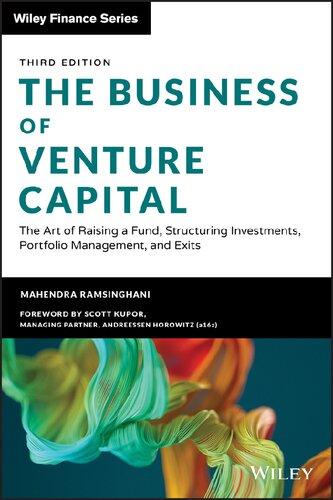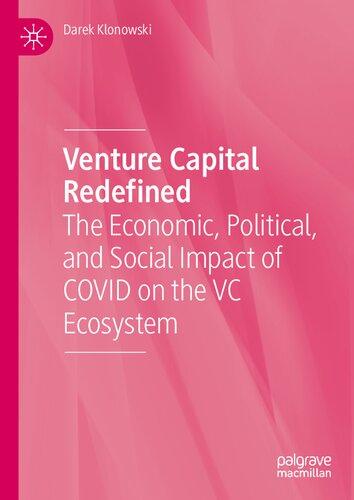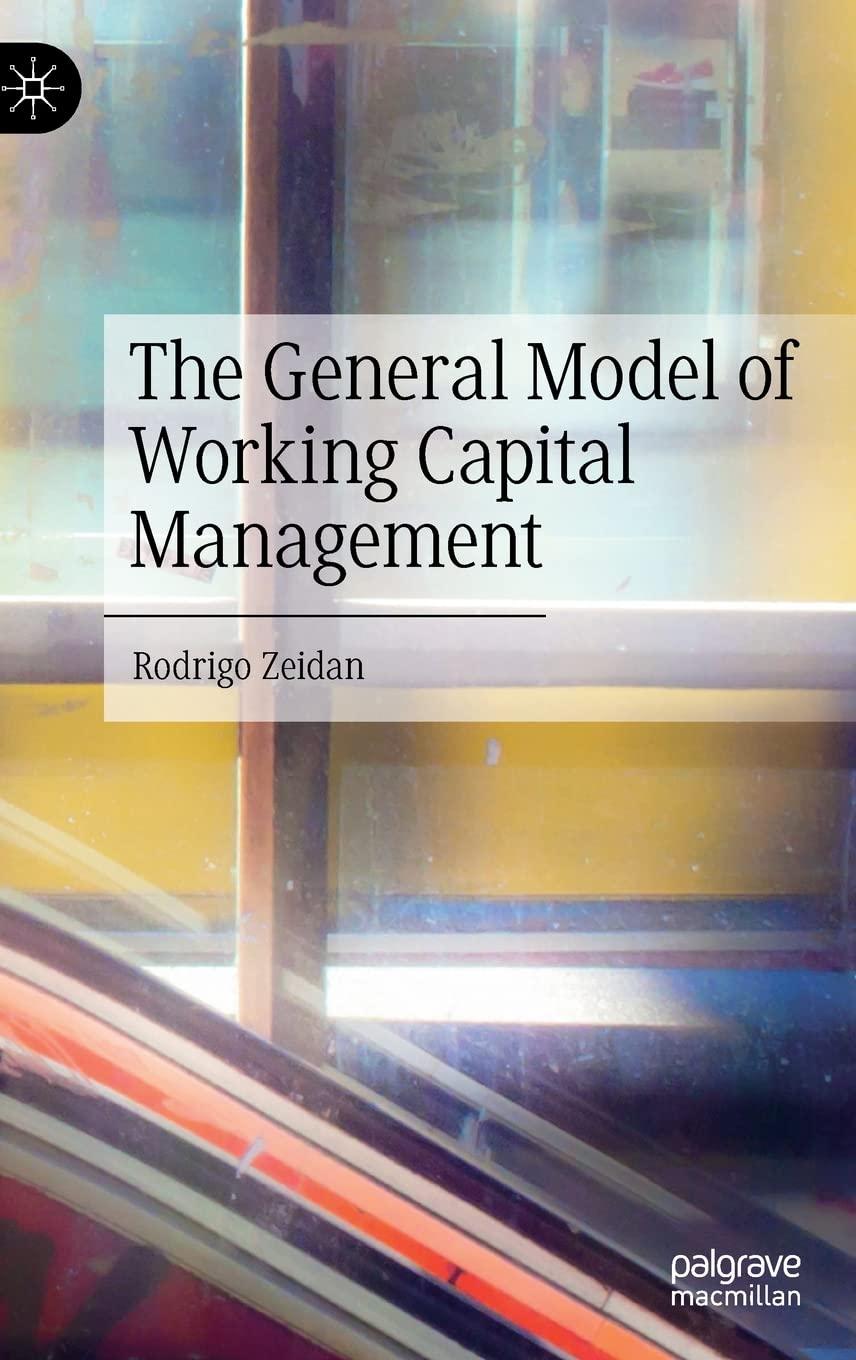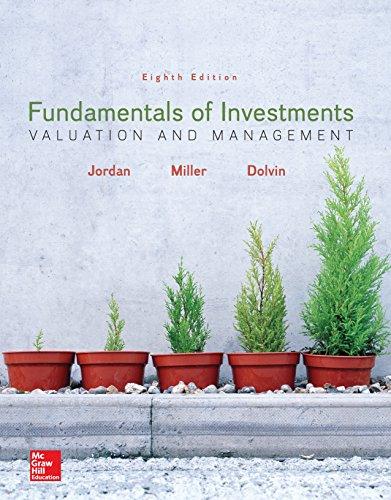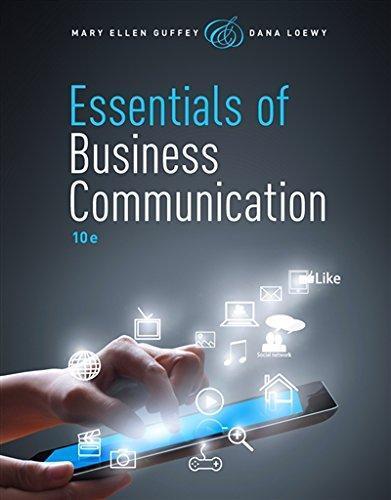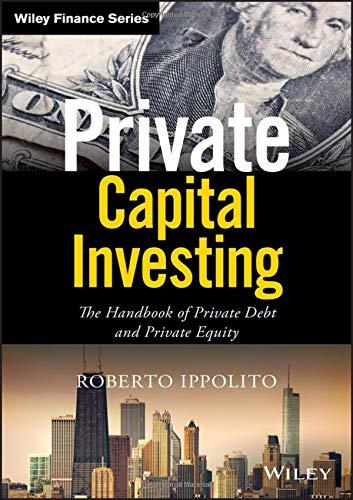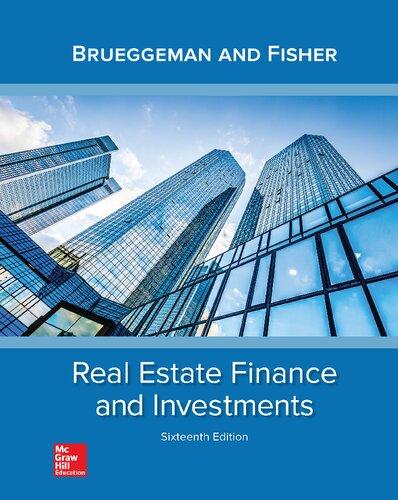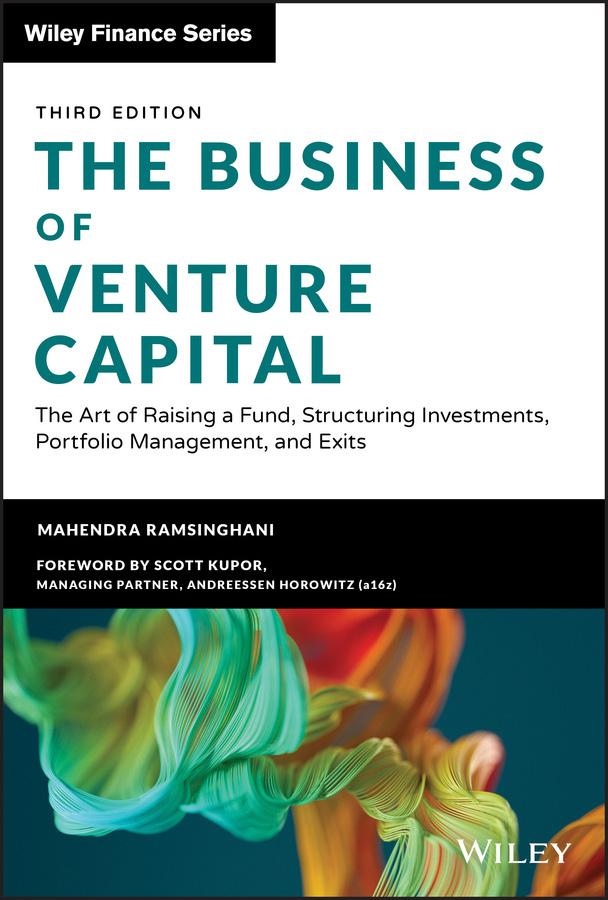The Business of Venture Capital, + Website: The Art of Raising a Fund, Structuring Investments, Portfolio Management, and Exits (Wiley Finance) Third Edition Ramsinghani
Visit to download the full and correct content document: https://ebookmass.com/product/the-business-of-venture-capital-website-the-art-of-rais ing-a-fund-structuring-investments-portfolio-management-and-exits-wiley-finance-thir d-edition-ramsinghani/
More products digital (pdf, epub, mobi) instant download maybe you interests ...
Venture Capital Redefined - The Economic, Political, and Social Impact of COVID on the VC Ecosystem 1st Edition Darek Klonowski
https://ebookmass.com/product/venture-capital-redefined-theeconomic-political-and-social-impact-of-covid-on-the-vcecosystem-1st-edition-darek-klonowski/
World of the Third and Hegemonic Capital. Between Marx and Freud Anjan Chakrabarti
https://ebookmass.com/product/world-of-the-third-and-hegemoniccapital-between-marx-and-freud-anjan-chakrabarti/
Introduction to Finance: Markets, Investments, and Financial Management, 15th Edition – Ebook PDF Version
https://ebookmass.com/product/introduction-to-finance-marketsinvestments-and-financial-management-15th-edition-ebook-pdfversion/
The General Model of Working Capital Management Rodrigo Zeidan
https://ebookmass.com/product/the-general-model-of-workingcapital-management-rodrigo-zeidan/
Fundamentals of Investments: Valuation and Management 8th Edition, (Ebook PDF)
https://ebookmass.com/product/fundamentals-of-investmentsvaluation-and-management-8th-edition-ebook-pdf/
Essentials of Business Communication (with Premium Website, 1 term (6
https://ebookmass.com/product/essentials-of-businesscommunication-with-premium-website-1-term-6/
Private Capital Investing: The Handbook of Private Debt and Private Equity (Wiley Finance) 1st Edition Ippolito
https://ebookmass.com/product/private-capital-investing-thehandbook-of-private-debt-and-private-equity-wiley-finance-1stedition-ippolito/
Investments: Principles of Portfolio and Equity Analysis (CFA Institute Investment Series Book 37) 1st Edition, (Ebook PDF)
https://ebookmass.com/product/investments-principles-ofportfolio-and-equity-analysis-cfa-institute-investment-seriesbook-37-1st-edition-ebook-pdf/
Real Estate Finance and Investments 16th Edition Brueggeman And Fisher
https://ebookmass.com/product/real-estate-finance-andinvestments-16th-edition-brueggeman-and-fisher/
SECOND EDITION
80+ Customer Ratings on Amazon with over 50 Five-Star reviews
“The Business of Venture Capital is a comprehensive book with data, industry trends, and insights from leading VCs and LPs –a must have for practitioners.”
—David York, Managing Director, Top Tier Capital Partners, a Fund-of-Funds with over $2 billion under management
“Whether you are a practitioner or a student of the venture capital industry, this book offers innumerable insights into the art of the deal.”
—Scott Kupor, Managing Partner, Andreessen Horowitz
“A valuable resource for beginners and experts alike, The Business of Venture Capital addresses the complexities and challenges of being a successful venture capitalist.”
—Michael Kim, Managing Partner, Cendana Capital, a next generation Fund-of-Funds
“Mahendra’s research into today’s most active investors reveals how the Venture Capital model is evolving. It’s the closest book I’ve found to a User’s Manual for VCs.”
—David Cowan, Bessemer Venture Partners
“Combines concrete examples and deep insights of industry leaders – a must-have for any venture investor or practitioner.”
—Karim Faris, General Partner, Google Ventures
“Mahendra demonstrates how skill, discipline, and often luck and intuition can help to create successful venture capitalists. This is engaging and enjoyable.”
—Jon Callaghan, True Ventures
“Detailed yet accessible description of the many facets of venture capital – from the nuanced considerations of LPs to the intricate mechanics of the entrepreneurial companies they bet on.”
—Amish Jani, Founder and Managing Director, FirstMark Capital
FIRST EDITION
“If you read only one guide to becoming a successful VC, this is the one to read.”
—Paul Maeder, Chairman, National Venture Capital Association (NVCA)
“Captures the LP mindset succinctly – any GP or aspiring VC can benefit from this book.”
—Timothy Recker, Chairman, Institutional Limited Partners Association (ILPA)
“... packs the insights and wisdom of those who have done it, not once but multiple times.”
—Frank Caufield, cofounder, Kleiner Perkins Caufield and Byers
“An immensely useful and comprehensive guide.”
—Mark Florman, CEO, British Venture Capital Association (BVCA)
THE BUSINESS of VENTURE CAPITAL
THE
ART of RAISING a FUND, STRUCTURING INVESTMENTS, PORTFOLIO MANAGEMENT, and EXITS
THIRD EDITION
Mahendra Ramsinghani
Copyright © 2021 by John Wiley & Sons, Inc. All rights reserved.
Published by John Wiley & Sons, Inc., Hoboken, New Jersey.
Published simultaneously in Canada.
No part of this publication may be reproduced, stored in a retrieval system, or transmitted in any form or by any means, electronic, mechanical, photocopying, recording, scanning, or otherwise, except as permitted under Section 107 or 108 of the 1976 United States Copyright Act, without either the prior written permission of the Publisher, or authorization through payment of the appropriate per-copy fee to the Copyright Clearance Center, Inc., 222 Rosewood Drive, Danvers, MA 01923, (978) 750-8400, fax (978) 646-8600, or on the Web at www.copyright.com. Requests to the Publisher for permission should be addressed to the Permissions Department, John Wiley & Sons, Inc., 111 River Street, Hoboken, NJ 07030, (201) 748-6011, fax (201) 748-6008, or online at www.wiley.com/go/permissions.
Limit of Liability/Disclaimer of Warranty: While the publisher and author have used their best efforts in preparing this book, they make no representations or warranties with respect to the accuracy or completeness of the contents of this book and specifically disclaim any implied warranties of merchantability or fitness for a particular purpose. No warranty may be created or extended by sales representatives or written sales materials. The advice and strategies contained herein may not be suitable for your situation. You should consult with a professional where appropriate. Neither the publisher nor author shall be liable for any loss of profit or any other commercial damages, including but not limited to special, incidental, consequential, or other damages. For general information on our other products and services or for technical support, please contact our Customer Care Department within the United States at (800) 7622974, outside the United States at (317) 572-3993, or fax (317) 572-4002.
Wiley publishes in a variety of print and electronic formats and by print-on-demand. Some material included with standard print versions of this book may not be included in e-books or in print-on-demand. If this book refers to media such as a CD or DVD that is not included in the version you purchased, you may download this material at http:// booksupport.wiley.com. For more information about Wiley products, visit www.wiley.com.
Library
of Congress Cataloging-in-Publication Data
Names: Ramsinghani, Mahendra, author.
Title: The business of venture capital : the art of raising a fund, structuring investments, portfolio management, and exits / Mahendra Ramsinghani.
Description: Third edition. | Hoboken, New Jersey : John Wiley & Sons, Inc., [2021] | Series: Wiley finance series | Includes bibliographical references and index.
Identifiers: LCCN 2020030565 (print) | LCCN 2020030566 (ebook) | ISBN 9781119639688 (hardback) | ISBN 9781119639718 (adobe pdf) | ISBN 9781119639701 (epub)
Subjects: LCSH: Venture capital.
Classification: LCC HG4751 .R36 2020 (print) | LCC HG4751 (ebook) | DDC 332/.04154068–dc23
LC record available at https://lccn.loc.gov/2020030565
LC ebook record available at https://lccn.loc.gov/2020030566
Cover Design: Wiley
Cover Image: © piranka/Getty Images
Author Photo: Courtesy of Mahendra Ramsinghani
10 9 8 7 6 5 4 3 2 1
In the memory of my parents, who reminded me to put knowledge above wealth, people above profits, truth above power, and service above self
For Amar and Geeta, who gave me wings & for Deepa and Aria, who bring the light and the song
Foreword
Now in its third edition, The Business of Venture Capital builds on the foundational best practices in venture investments, offering new, valuable tools along with some wit and wisdom. The scope of the venture capital business is wide, and often opaque. For example, how do our investors (limited partners or LPs) make decisions? What challenges do they encounter, and how should a general partner (GP) understand their universe? How can a practitioner build a “point of view” on the market, identify emerging trends, compete to win the best opportunities, and nurture them to success? What biases and cognitive traps spring up in our business? How should we think probabilistically? What skills are critical to our business, and how does one develop such skills? Which parts of our business are at the mercy of the markets?
In this book, you will find answers to many of these questions. But, as with any good book, it will leave you thinking about many other questions. You'll ultimately need to figure out how to apply many of the mental models about which Mahendra writes to your own situation.
Over the past decade, Mahendra has had to answer many of these questions, both as an investor and a practitioner. When the first edition was released nearly a decade ago, there was no book on VC and the blogosphere was just in its infancy. So, he heeded Nobel Prize winner Toni Morrison's advice: “If there's a book that you want to read, but it hasn't been written yet, then you must write it.”
Foreword
This book includes views of over 50 leading LPs and GPs, compiled in a jargon-free, digestible format to benefit all those exploring VC as a path, whether you're a solo-GP getting ready to raise a fund or a venture partner on your first board. This book covers the arc of investment and blends lessons from Silicon Valley as well as other parts of the country. Over the past decade, much has evolved — the amount of capital flowing in venture has increased tenfold by some estimates. Besides mainstream LPs, hedge funds, sovereign wealth funds, and corporate VC funds have helped shape this growth trajectory. At the same time, the presence of new and large players, including Softbank, have impacted the nature of the venture business overall.
Indeed, our business is changing rapidly and, with it, we continue to evolve. But our singular goal remains the same — to help entrepreneurs in their journey to build important and lasting businesses, along the way generating superior returns for our investors. It is my hope that this book will not only set the foundation for you but make a meaningful impact in your journey as a practitioner.
Scott Kupor Author, Secrets of Sand Hill Road: Venture Capital and How to Get It
Managing Partner, Andreessen Horowitz (A16Z) Former Chair, National Venture Capital Association (2017–2018)
Preface
WHY SHOULD YOU READ THIS BOOK?
Thank you, dear reader, for arriving at the doorsteps of this somewhat lengthy tome. I hope you reached here, at the doors of this career after some thought and planning, unlike me, who stumbled in the VC wormhole and got sucked in 20 years ago. Do you really need a big, fat, expensive book on venture capital, when a thousand blogs can give you answers instantaneously? Surely, in this day and age of free content, why would you want to pay an ungodly amount to buy a book? And who has time to read these days?
And you must surely know, no book will teach you how to be a great investor — you have to get out there and start investing. Like learning to ride a bicycle. A book can only do so much. The learning comes from doing.
But what is the best way to become a good investor — to build a structured approach, to build your foundation, and to build a strong core? Maybe this book can help. The business of venture capital not only presents basic principles, checklists, and frameworks, but also shares philosophies and wisdom of the ages. At its very core, an investor has the ability to understand risk and then make a probabilistic bet against that risk. We do this to achieve outstanding “venture-like” returns, well above some other asset classes.
On the face of it, the business sounds easy. I mean — how hard can this be? As they say, any fool can write a check. Everybody knows the obvious of investing: “Buy low, sell
high.” But how many can do it consistently across macroeconomic changes, with evolving technology cycles, competitive landscape, regulatory dynamics, and management teams? The sands of time keep shifting. Entropy prevails. All that is valuable is being eroded by the new waves. Your role as an investor is to make sure you can stay balanced, find music in this cacophony, and find the right signal.
In public equities, trading strategies include a “momentum” driven approach. You invest in a stock that has a high level of buy–sell activity. This momentum drives the price. In a frenzy, everyone jumps in and the price starts to go up, but very few pause to step away from the herd. To ask, “Why is this happening?” is not the mind-set of the momentum investor. They are well trained to make several short trades and know when to get in, when to get out. The “value” investor — someone like Warren Buffett — studies the company's financials, its value proposition, the ins and outs of the sector, competition, product pricing, defensible moats, and more. The intellectual effort for understanding value is much more different and strenuous than the herd mentality momentum-based trade. Bear in mind that we are not here to make moral judgments against momentum trades nor demonstrate superiority of any kind — we are merely choosing a path, based on our strengths to get to a destination. I was a herd trader, too, until I could develop my own muscles and confidence. Success can come from many paths, and you have to choose what works best for you. I have tried both approaches and can tell you one is far easier than the other, but the rewards of a well-planned strategy are immensely gratifying — both intellectually and financially. It is like a game of chess — only in this case, you have n number of opponents.
One of the primary goals of this book is to help you to build the muscle — manage risk effectively, shield yourself from all the biases, and get to the promised land.
The second goal is a bit more subtle — what kind of a person will you become in this journey? As a venture capitalist, we are not just trading stock — we work with people. That indomitable human spirit in founders comes to you. They bring their
dreams, their life-time aspirations — if we cannot look beyond their fancy PowerPoint decks, we are to blame. Those dreams are a part of this package. If we only chase financial outcomes, are we being short-sighted and self-serving? Wall Street may choose to operate that way, not Sand Hill Road. Not venture. A typical VC interacts with the portfolio founder multiple times a week — a Wall Street trader may never know the name of the management team members. We become intimately aware of the founder's day-to-day dilemmas and their sleepless nights, their joys, sorrows, anxiety, and depression — all of these come with this package as well. So the next time you make an investment, remember that you are not just making a trade — you are putting on fertilizer to help sprout the founder's dreams. Of such dreams will come a better tomorrow. If there is a gale storm in the middle of the night, you better get out of bed and get out there. Do your best to protect those saplings. And this business will not disappoint — you will find the best and worst of human behaviors when you make (or lose) big money. Because there are two primal drivers — those imposters called greed and fear. This business brings all the highs and lows of these two demons. Dysfunctions within venture funds, their founding teams, CEO desire for global dominance, street fights with competition, slick maneuvers, politics, ego, drama — you name it, and this business has it all. Not getting caught up in this theater and still staying true to yourself can be a challenge. I could share some great stories of power, greed, backstabbing, and more, but I will save the gossip and entertainment for People magazine. My goal was to bring out the best of this business and leave the reader empowered and inspired. To stay persistent and focused over the long haul despite all these primal challenges requires some tenacity. How do you build a fair and balanced core in your ethos, your DNA, and your daily persona?
Until our portfolio company becomes an enduring milestone, we must fight their fight with every inch of our lives, blood, sweat, and soul. Our work is done not when we make great returns but only when we help fulfill the dreams of founders. To forget this basic rule of venture investments
is to forget our purpose. For it is not our goal to mindlessly multiply small pieces of green paper and proclaim Midas list ranks on our resume — that is a fool's errand for those who, while getting rich, leave behind a trail of carcasses of broken dreams. We are here to help those dreams come one step closer to reality. We are here for empowering the crazy ones with our gifts of time, money, intellectual insights, and our wonderful relationships. All of this to serve for the greater good of society. That should be our singular goal.
To find the founder whose vision is to serve for the most good of the society is not an easy task. In the beginning, all founders sound alike — their mission statements filled with zeal and passion. They serve up PowerPoints to our demand for “billion-dollar” markets. It is your job to dissect the frothy shapeshifters from the authentic forces of good. How do you make value judgments when faced with the promise of fantastic returns? Juul — the e-cigarette vaping company — grew the fastest in recent years, raised the most amount, and can generate the best returns for their portfolio. But if you were to make a lesser return in another company, say one that's addressing cancer, would that align with your values? Would your limited partners (LPs) be happy? Would you be satisfied with the trajectory of your career?
Indeed, “values over valuation” has been one of our larger business challenges — if we chase the promise of an IPO and triple-digit IRR but damage the socioeconomic fabric, where do we draw the line? I know one prominent investor who chooses to not use the portfolio company's technology for defense markets. The CEO was blunt — our technology can kill a lot of people, but we will never sell it for that purpose. The company would be valued at least 10 times more if it went down that path, but its bedrock values keep it on course, staving off the monkeys of greed. If you do not establish the foundation of values, you could make money, lots of it — but then you might feel purposeless, adrift in the sea of capitalism. What set of values will become your internal compass to help you make the right decisions when you stand at the
tougher crossroads of our business? As you build a framework of values, this work is like a journey, best illustrated by C. P. Cavafy's poem “Ithaka”:1
Better if it lasts for years, so you're old by the time you reach the island, wealthy with all you've gained on the way,
And we are here only for a short while, even though VCs are desperately trying to solve for death.
Come now, you who say, “Today or tomorrow we will go into such and such a town and spend a year there and trade and make a profit” — yet you do not know what tomorrow will bring. What is your life?
For you are a mist that appears for a little time and then vanishes.2
So this book weaves in lessons from these three areas — managing risk, service to founders, and above all, developing a framework of values.
AND WHO AM I TO WRITE THIS BOOK?
There are no experts (nor will there ever be) in the world of venture capital. It's like the list of top Hollywood stars or topperforming mutual funds — each year, you have someone new at the top. In this constant churn, we are all learning this craft, and apprenticeship is the name of this daily practice. Those at the top are humbled by the forces of the unknown: risk and uncertainty. In recent times, their own arrogance and exploitative behavior have brought their downfall. And those at the bottom of the pyramid are striving — a combination of luck, some skill, huge networks, and the advantages of market timing lift them up.
Jorge Luis Borges wrote, “I am all the writers that I have read, all the people that I have met, all the women that I have
loved; all the cities that I have visited, all my ancestors.”3 With all that and more, being a storyteller at heart, exposure to this business makes it easier for me to share the lessons. Having tasted all three layers of the founder-GP-LP cake as a practitioner in Silicon Valley and having invested in over a hundred companies over the past decade, I have made a lot, lost a lot, and learned a lot. These lessons, some very expensive ones, are offered in this book. In my quest to learn the nuances of this business, I have compiled insights of proven investors from firms like A16Z, Benchmark, First Round, the Foundry Group, True Ventures, Sequoia Capital, and Union Square Ventures, to name a few. I have also woven these with the wisdom of investment giants like Warren Buffett, Charlie Munger, and Nicholas Nassem Taleb because their observations can be applied to most parts of our business and life. And finally, I sprinkled in some wisdom from philosophers and Nobel Laureates (like Bob Dylan).
Having co-invested with some of the best-in-class, and occasionally with the pseudo-intellectuals, opportunists, and carpetbaggers, you experience the people problem in our business. You never know the true nature of a person until you reach the extremes of success or failure. Big exits drive greed. Failure gets everyone scampering away. Blame is pinned on some macro-event, China, or circumstance. Amidst these roller-coaster rides, I learned two things well: (a) how to avoid the self-serving and the greedy and (b) where I could not avoid, I mastered the art of projectile vomiting.
As Rudyard Kipling wrote in his poem, “If”:4
If you can make one heap of all your winnings
And risk it on one turn of pitch-and-toss, And lose, and start again at your beginnings And never breathe a word about your loss. . .
Yup, I've experienced a bit of that. So those are some good reasons why I'm qualified to write such a book. If you feel the ROI on this book has not been to your high expectations, dear reader, I am sorry I have wasted your time
with this rambling repository of riffs, anecdotes, and generally available kitschy stuff. And yes, I'm happy to refund you a full amount. Or make a donation to a charity of your choice. For all others who get featured on that Forbes Midas List after reading a page or two of this book, do feel free to send me a few points of that carry. I'm saving up to buy a winery in Hawaii as I approach my retirement years. Aloha to health, happiness, harmony, peace, abundance, and carry.
WHAT SHOULD YOU KNOW ABOUT THIS BUSINESS Of VENTURE cAPITAL?
It's not as easy as it looks. And not as hard as you might think it is. But I'm sure you expect a bit more than that. So here are seven pointers:
1. The VC business is changing, growing, and even maturing a bit. There are over a thousand VC firms managing about $400 billion in assets under management (AUM). This has doubled in the past decade, which is a good thing. Money is flowing in this asset class, and our business is about deal flow and cash flow — and with LPs pouring in the cash, VCs can continue to make investments. In any given year, 200+ funds raise their capital, and the average fund size raised is now at $200+ million. The largest VC fund raised was Sequoia Growth at $8 billion. The $100 billion Softbank Vision Fund is in a league of its own — more capital than all venture funds combined, promising trillions in return. Such a leap in the punctuated equilibrium of funds is a once-in-a-lifetime event, where it leaps 100X over the average fund size of $1 billion. A billion no longer brings a sense of awe, but a $100 billion fund might be trending alongside #respect and #unicorns. With COVID pandemic, we are forced to make investment decisions without much face-to-face interactions. I am sure such a shift will eliminate a lot of meeting room
theatrics, posturing, and above all — the nonsensical CEO assessments, where VCs make leadership judgments in a few hours and are always wrong.
2. Veni, Vedi, VC. Let's conquer and disrupt everything. The final frontier is death. Brave scientists and founders, armed with capital, have raised capital to mine asteroids, live on Mars (the planet, not the chocolate factory), and solve for every problem — existent or imagined. One startup was launched so that we could just say “yo” to each other. It raised a few million and then died. Investment thesis have expanded from software and technology domains, to new promises and fertile lands. Like nomadic farmers, VCs are rushing into new territories — artificial intelligence, robotics, blockchain, finance and insurance technologies, and an alphabet soup of buzzwords that include 5G and IoT, sprinkled with quantum, edge-computing. The opportunity set is broad. GPs have a hard time focusing — we are all kids in this global candy shop of innovation. This is the best time to be in the business of VC.
3. More money = more competition = higher entry valuations = lower returns. With additional flows of capital, we are reminded of the basics of economic theory. Supply and demand, prices and elasticity — as VCs chase riskadjusted returns, the valuation curves in later-stage companies have started to bend dramatically. Or let me put it another way — valuations have become crazy pricey. And as one side goes up, another goes down. This impacts potential for generating returns. Increased valuations have got very little to do with higher acquisition values or superior exit outcomes — it's merely a function of more money chasing a few good opportunities. So as the competition heats up, we need to improve sourcing skills, engage with founders via disciplined processes, and understand how we can deliver higher probabilistic outcomes. Boy, this game just got a lot more serious. So it's time to hone your investment skills.
4. Honing your skills beyond term sheets and balance sheets is important. Are you good at probability? Playing poker? Nerdy enough to bet on technology trends? How do you want to play — are you fiercely competitive? Or are you like Peter Thiel, who likes monopolistic hidden gems and operates like a chess grandmaster? He is also good at probabilistic betting and snagging big outcomes — his $500,000 investment in Facebook generated a 10,000X return. Even his $1.5 million bet on Donald Trump's election campaign paid off big time, while CRV, an East Coast venture firm, blazoned its website home page with “F*ck Trump” on election day. So as an investor, you have to decide which part of the playground you want to play in. Business, finance, politics, power — or a mix of all. This will define your investment thesis or strategy and help you to hone your areas of focus. With pandemics, trade wars, and geopolitical shifts, new opportunities continue to arise, and the world is indeed your oyster. Try to make sense of all these trends and then do the most difficult part — develop some unique points of view, not widely understood or accepted. You make money only when you find hidden gems in nonobvious places.
5. We take ourselves too seriously, and imitate each other mindlessly. Most VCs like to portray themselves as superintellectuals when all they do is rinse and recycle ideas, picked up from others. Most VCs mindlessly imitate a handful of top-tier investors, chasing their investments while positioning themselves as thought leaders. HBO launched a parody. . . er . . . a comedy show on the antics of VCs and founders in Silicon Valley. We have come a long way indeed when we have our own show — a sign of maturity. It's not just investment strategies or authoring blog posts and essays that are being mimicked. Be it office space or fashion, VCs herd together from Sand Hill Road to South Park. Patagonia vests are so popular with VCs in Silicon Valley, Fortune magazine ran a
parody post titled “Group of White Men in Patagonia Vests Confused for VC Fund, Raise $500 Million,”5 where one fictitious VC, Evan, says, “At first I tried to tell people we don't work in venture capital. . .But then I got to thinking, how hard can it be? I can always tell which ideas are good ideas, and now I have a few hundred million dollars to prove it.” One of their investments was in Patagon.io (no relation to Patagonia), which is experiencing hockey-stick growth. To make their job really easy, they backed a group of data scientists who have found a way to use drones and artificial intelligence to geolocate groups of white men wearing Patagonia vests in order to predict future investment opportunities. Amen!
6. We rationalize in hindsight, and don't fully understand our biases. One of the finest books on human behavior, Thinking Fast and Slow by Daniel Kahneman is fat and dense, but it can give you insights in your own mind's operating system (or the OS and the BS in our heads). Or Workplace Poker by Dan Rust can help you play politics better, and even gracefully tackle your smiley-faced backstabbing partners. Try to understand your special skills and unfair advantages that can help you win — you may be able to spot technology trends while others are busy elsewhere, or know people that can bring value to your world in creative ways. You may be a well-connected princeling or have access to the corridors of power. Improving your game involves maintaining a student mind-set, understating human psychology, biases in decision-making, spotting groupthink, avoiding false starts or flash trends, and catching big waves.
7. The VC business model is evolving, but slowly — very slowly. When Fred Wilson was asked how the VC model will evolve in 20 years, he said, “All I know is that it will be different.” He was humble enough to avoid making grandiose predictions. The only significant innovation in the past decade has been that carry has gone from 20 percent
to 30 percent for some firms, while losses have worsened. In recent years, we have seen the rise of online platforms to facilitate more transactions and liquidity (AngelList, SecondMarkets) and the use of big-data and AI (just Google “Chris Farmer and SignalFire” and see how his data-driven VC approach can disrupt the disruptors), and the distributed ledger. It can shift the flow of capital from the LP-GP-founder trickle to a gamechanging peer-to-peer funding model. Fun times ahead.
Build on these last 50 years of VC legacy and create your own recipe for VC in the next 50 — your own brave new world. And don’t compare yourself to the VC heroes and gods, but carve your own authentic path.
As advertising guru David Ogilvy once said, “Aim for the company of immortals.”
